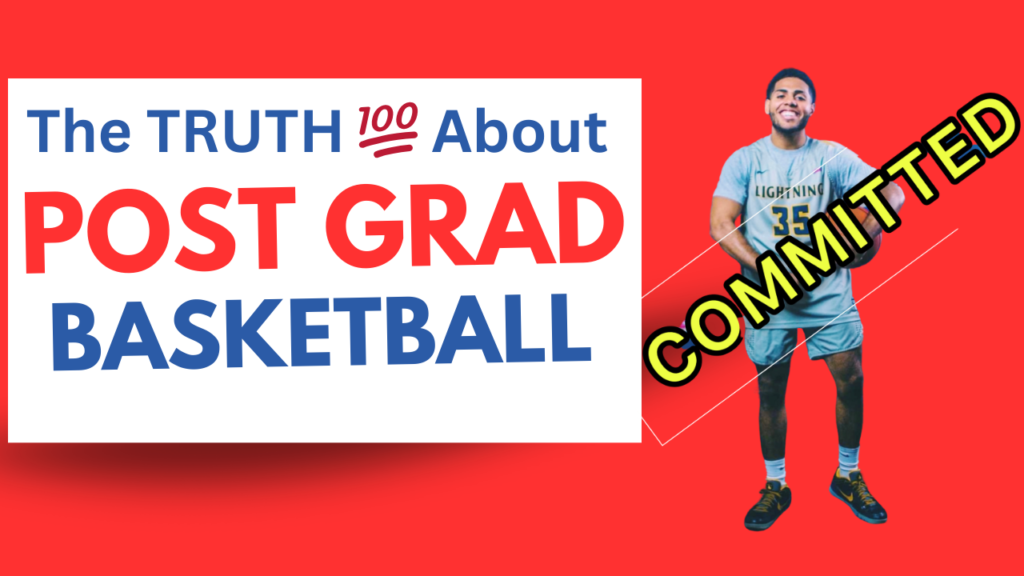Debunking Myths & Revealing the Truth About College Basketball
How Hard Is It To Be A Walk On In College Basketball?
Every basketball player dreams of playing at the collegiate level.
The bright lights, the roar of the crowd, the intense competition against some of the best young talent in the country—it’s an intoxicating vision.
But for most high school players, the reality is that a full athletic scholarship is out of reach.
Here’s where the walk-on option comes in.
Walk-ons are the unsung heroes of college basketball, the players who dedicate themselves to the sport without the guarantee of financial aid or playing time.
They bring a unique blend of passion, perseverance, and talent to the court, and their stories are a testament to the power of hard work and dedication.
So, What’s a Walk-On, Exactly?
In the simplest terms, a walk-on is a non-scholarship player on a college basketball team.
Unlike scholarship athletes who are recruited by coaches and offered financial aid packages to attend the school, walk-ons take the initiative to reach out to programs they’re interested in and express their desire to try out for the team.
They typically don’t have the same level of recruiting attention as scholarship athletes, but their talent, work ethic, and dedication can still catch the eye of a coach.
Walk-ons come from all walks of life and basketball backgrounds.
Some may be hidden gems from small high schools who haven’t received much recruiting attention.
Others might be players who developed late and haven’t reached their full potential yet.
There are even some walk-ons who have transferred from other schools or taken a break from basketball before deciding to pursue their dream at the collegiate level.
Regardless of their background, walk-ons share a common passion for the game and a willingness to compete at the highest level, even without the financial support of a scholarship.

Why Choose the Walk-On Path?
There are several reasons why a player might choose to be a walk-on, and they go beyond just a love for the game.
Here’s a deeper dive into the motivations that drive walk-ons:
- The Love of the Game: This is the most obvious reason. Walk-ons are deeply passionate about basketball and can’t imagine giving up on their dream of playing college ball. They crave the competition, the camaraderie, and the feeling of being part of a team at the highest level.
- A Chance to Prove Themselves: Some walk-ons might feel overlooked or underrated by the recruiting system. They see walking on as an opportunity to showcase their talent in front of coaches and potentially earn a scholarship down the line.
- Development and Growth: College basketball programs offer a high-level training environment with experienced coaches and talented teammates. Walk-ons benefit from this daily grind, improving their skills, basketball IQ, and overall understanding of the game.
- The College Experience: Being a part of a college basketball team, even as a walk-on, is an enriching experience. Walk-ons get to travel with the team, experience the atmosphere of packed arenas, and build lifelong friendships with teammates and coaches. It’s a unique opportunity to immerse themselves in college life while pursuing their passion for basketball.
The Academic Advantage: A Walk-On’s Secret Weapon
Here’s the thing: exceptional grades can be a major advantage for aspiring walk-ons.
Colleges love student-athletes who excel in the classroom.
Strong academics not only demonstrate a well-rounded commitment to education and athletics, but they also contribute to the team’s overall GPA.
This is important for several reasons.
First, the NCAA sets minimum academic requirements that all student-athletes must meet in order to compete.
A high GPA can help ensure a walk-on remains eligible throughout their college career.
Second, a strong academic profile reflects positively on the basketball program itself.
It shows that the program attracts not only talented athletes, but also dedicated students who prioritize their education.
This can be a selling point for the program when it comes to recruiting and attracting top talent. Finally, excellent grades can make a difference in a walk-on’s scholarship chances.
If a coach is on the fence about a player, outstanding academics might just be the deciding factor that tips the scales in their favor.
Coaches know that walk-ons are likely to require some additional academic support to balance the demands of basketball with their studies.
A strong academic record demonstrates a walk-on’s ability to manage their time effectively and succeed in the classroom, making them a less risky investment for a scholarship opportunity.

D1 Walk-Ons: A Rare Breed
Walking onto a Division 1 team is incredibly difficult, and even if you do make it, life as a D1 walk-on isn’t glamorous.
It’s a lot of hard work, long hours, and often little playing time.
If you have the talent, work ethic, and commitment to survive the D1 grind, you might have a shot at earning a scholarship.
But What About Scholarships?
Most walk-ons don’t get athletic scholarships.
Some programs offer “preferred walk-on” spots, which guarantee a roster spot and the chance to compete for playing time, but no financial aid.
However, preferred walk-ons can sometimes earn scholarships after their first year if they prove themselves on the court.
The Walk-On Life: It’s Not for Everyone
Being a walk-on is not a cakewalk.
You’ll be putting in long hours of practice, often playing on the scout team against scholarship players.
You might not see much playing time in games, and you’ll have to balance your basketball commitments with academics and a social life.
The Rewards: More Than Just Playing Time
While the challenges are real, the rewards can be immense.
Walk-ons develop incredible discipline, mental toughness, and a deep understanding of the game.
They build strong bonds with teammates and coaches, and they create lifelong memories.
The Numbers: Walk-Ons by the Numbers
According to the NCAA, a significant percentage of college athletes are walk-ons.
In Division I, it’s about 46%, and in Division II, it’s 39%.
Remember, Division III doesn’t offer athletic scholarships, so the walk-on status isn’t calculated there.
5 Tips for Aspiring Walk-Ons
- Academics First: Focus on your grades and standardized test scores.
- Contact Coaches: Reach out to coaches at schools you’re interested in. Let them know you’re interested in trying out as a walk-on.
- Show Your Skills: Attend camps and showcases to get noticed.
- Be Realistic: Understand the challenges and be prepared for the grind.
- Don’t Give Up: Walk-ons have gone on to have successful college careers and even play professionally.

FAQ: Your Burning Questions Answered
- Q:How can I become a walk-on in college basketball? A: Focus on exceptional grades, contact coaches, and showcase your skills at camps and showcases.
- Q:How do I walk on at a D1 school? A: Walking on to a D1 school is extremely rare and challenging. If you have the talent and dedication, it’s possible, but be prepared for a tough road.
- Q:Do walk-ons get scholarships? A: Most walk-ons don’t receive athletic scholarships initially, but some programs offer “preferred walk-on” spots. These can lead to scholarships if the player performs well.
- Q:How many college athletes are walk-ons? A: 46% of Division I athletes and 39% of Division II athletes are walk-ons.
- Q:How hard is it to walk on to a D3 basketball team? A: It can vary depending on the school and program, but generally, it’s less competitive than D1 or D2.
Remember, the walk-on path isn’t easy, but it can be incredibly rewarding.
If you’re truly passionate about basketball and willing to put in the work, it might just be the path for you.
